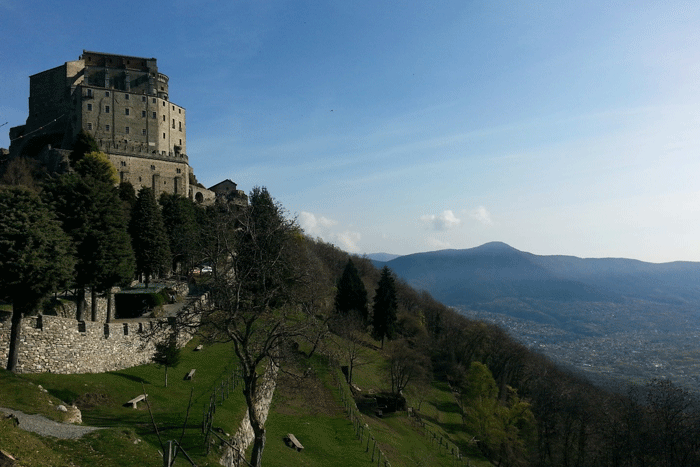And Now for Some Extra ‘Immersione’

Sacra di San Michele, sometimes known as Saint Michael's Abbey, symbol of Piedmont, in Val di Susa, Italy. Photo by Maxwell Lio '17 .
Dickinson’s Bologna program expands, bringing two distinct offerings to the table
by Tony Moore
One of the best ways to learn a language—and learn about the cultures of faraway places—is to leave your own language at home, get uncomfortable and dive headlong into another world. Move in with a family in another country, speak nothing but the local language and just get buried in it all.
And then again ... you may have never studied the local language or you may find yourself at the beginner level. To address this spectrum of needs, Dickinson’s Nilsson Center Bologna Program is now offering two distinct academic paths: Italian studies and European studies.
Since 1965
The original Bologna program was created in 1965 to focus on European studies course content in English. Currently, there is no Italian language prerequisite for the program, but all students take language at their own level once in Bologna. Unlike some of Dickinson's other abroad programs, this program was not created as a language immersion program.
While elements of an Italian immersion program have existed for some time—such as University of Bologna courses, civic engagement opportunities and Italian roommates—they have been parts of the larger Nilsson Center programming for all students, regardless of language ability. This new program allows for dedicated leadership in Bologna as well as much closer connections to the Italian studies curriculum in Carlisle.
“You can imagine the challenges that the Italian professors have had over the years sending our students to a program where Italian is not the main language of exchange,” says James McMenamin, associate professor of Italian. “The new Italian studies program in Bologna will address these challenges by hiring a permanent director of Italian studies to create an immersive cultural and linguistic environment for students studying advanced Italian.”
The full experience
In Bologna, the new director will teach a hands-on course about Italian culture conducted solely in Italian, expanding students’ knowledge of Italian history and society through interviews and travel. Students also will take courses in Italian at the University of Bologna on a variety of subjects, from environmental science to film studies.
“Our new Italian studies program—for which our Italian studies curriculum at Dickinson will prepare our students and support them when they return—offers an immersive, authentic Italian language and culture experience in Bologna, bookended by their learning in Carlisle,” says Samantha Brandauer ’95, associate provost & executive director, Center for Global Study & Engagement, who notes that students will live with Italian-speaking families or in an apartment with a native Italian student to further enhance the experience.
Looking forward
Beginning in fall 2018, students will apply to one of the two programs, and those admitted to the European studies program will continue to be required to take an Italian language course and choose from content courses in English offered at the Nilsson Center or, if they have the requisite language ability, courses at the University of Bologna.
Students enrolled in the Italian studies program—those with advanced language skills—will take courses taught in Italian at the same locations and will be involved with language exchanges, sports teams, and civic engagement projects around the city that address pressing social issues, such as immigration, sustainability and human rights, using their Italian.
In the end, McMenamin says the new Italian studies program will do in Bologna what Dickinson’s abroad programs strive to do generally. “The main benefit will be greater meaningful contact with Italian culture and the Italian language.”
Learn more
Published June 22, 2017